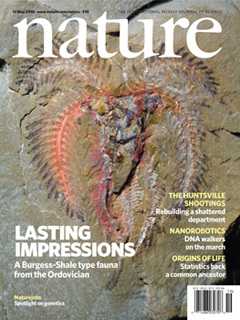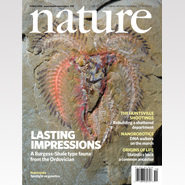Posted 01 June 2010
Fossils discovery fills 30-million-year gap in evolution of early life
According to new findings published on the cover of the leading journal Nature, UCD scientists working with colleagues in Yale University, England, France and Morocco have shown that various groups of marine animals thought to have died out about 500 million years ago actually lived for another 30 million years or more.

The findings were published as the cover story in the leading journal Nature. The researchers found more than 1500 fossils of marine creatures, such as this cheloniellid arthropod, that lived nearly 500 million years ago.
The By discovering fossils of soft bodied organisms like worms, sponges, and various types of soft-shelled arthropods, including the oldest horse shoe crabs, in the Fezouata Formations in the Draa Valley north of Zagora in southeastern Morocco, the team has provided the first examples of these ancient animals outside of classic older localities such as the Burgess Shale in Canada, which dates back 505 million years.
Until now, no other match for the fossils such as in the Burgess Shale had been found. Some scientists had speculated that the various groups may have gone extinct during that period due to a mass extinction event. While others believed that the exceptional preservation required to preserve them was so infrequent that it would be difficult to duplicate. With this latest discovery, the scientists have shown that these marine floor animals lived for at least another 30 million years.
The lead author of the scientific article Dr Peter Van Roy, a postdoctoral researcher at Yale University, recently completed a two-year IRCSET EMPOWER Postdoctoral Fellowship at UCD School of Geological Sciences. He first recognised the significance of the fossils almost a decade ago. Since then, he has worked with local Moroccan geologists and a team of researchers from Ireland, the UK, France and the USA to document the incredible diversity of the fossil discoveries.
“We know that the fossil record is an important record of life, but it is an incomplete record,” says Dr Patrick Orr from the UCD School of Geological Sciences, University College Dublin one of the scientists involved in the findings published in Nature. “It makes interpretation of the progress of early evolution very difficult, akin to trying to assemble the plot of a film using only intermittent still images.”
According to Orr, there was an explosion of new life forms during the Cambrian period – about 540 million years to 490 million years ago – with the shales revealing soft-bodied animals, and then the record went blank.
With these new Moroccan fossils the evolutionary story continues. It shows many of the animals from the Cambrian survived and multiplied into the next period, the Ordovician.
“This discovery is a landmark in evolutionary research, and provides a new window on the history of life,” says Orr.
Journal Reference:
Peter Van Roy, Patrick J. Orr, Joseph P. Botting, Lucy A. Muir, Jakob Vinther, Bertrand Lefebvre, Khadija el Hariri, Derek E. G. Briggs. Ordovician faunas of Burgess Shale type. Nature, 2010; 465 (7295): 215 DOI: 10.1038/nature09038

